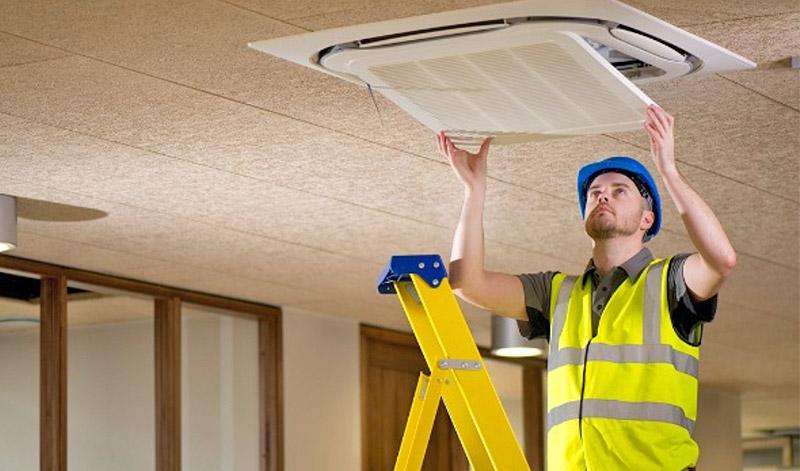
Comfort Zone: Improving HVAC System Performance
You want to improve the performance of your HVAC system, but it’s so complex. One way to tackle this problem is to start at the zone level (conditioned space) and work your way back to major system components. Going in this direction allows you to take advantage of downstream savings before taking on more complicated (and costly) projects.
As an example of this approach, repairing corroded dampers will ensure that they open and close properly, reducing energy waste and increasing comfort. This fix may also reveal additional savings opportunities, such as resetting controls or rightsizing equipment.
Optimizing zone-level performance
Zone-level equipment includes mixing dampers, reheat coils and thermostats that control the conditioned space. As facilities age, this equipment can fall into disrepair or out of calibration, reducing overall system performance. Fixing problems in the zone can save energy and increase occupant comfort. Measures you can take at the zone level include:
Inspect dampers. Without regular maintenance, dampers often become frozen in position, rendering them ineffective at regulating air flow and saving energy. Locating and repairing nonfunctioning dampers can be time-consuming and expensive, but it can pay dividends in increased system efficiency and enhanced comfort.
Recalibrate thermostats. In systems with pneumatic controls, recalibrate thermostats every six to 12 months to ensure that the temperature is regulated accurately and efficiently. Although you should check calibration in response to a problem or complaint, proactive maintenance can optimize system efficiency and energy savings.
Maintain reheat coils. Inspect reheat valves and coils to ensure that they respond appropriately to control system commands. Verify the capacity of an electric reheat coil by measuring its power input with an amp probe and comparing it to the nameplate value. If the measured value is significantly lower than the nameplate value, replace the coil.
Shut off reheat systems in summer. If your facility includes a constant-volume reheat system, consider disabling it during the cooling season. With electric reheat systems, it’s possible to power off reheat coils at the breaker, saving energy. In certain situations, it may be necessary to leave some reheat coil breakers active to maintain comfort.
Control static pressure (resistance to airflow). Dual-duct systems typically include air balancing dampers to regulate static pressure in hot and cold ducts in response to zone demands. Over time, these dampers can fall into disrepair and fail, resulting in wasted energy and reduced comfort. Regular inspection and repair will help optimize system performance.
Ensure airflow. Vacuum the coils of ceiling-mounted chilled beams and variable-refrigerant flow (VRF) cassettes annually to maintain a free path for air through the heat exchanger. For VRF cassettes, clean the internal air filter each month, and make sure grilles and diffusers are not blocked.
Now you’re ready to tackle the big picture. Examine major HVAC system components and look for issues such as outdated or oversized equipment. Consider an energy assessment of your facility. A qualified professional can help you target the most effective cost-saving opportunities.